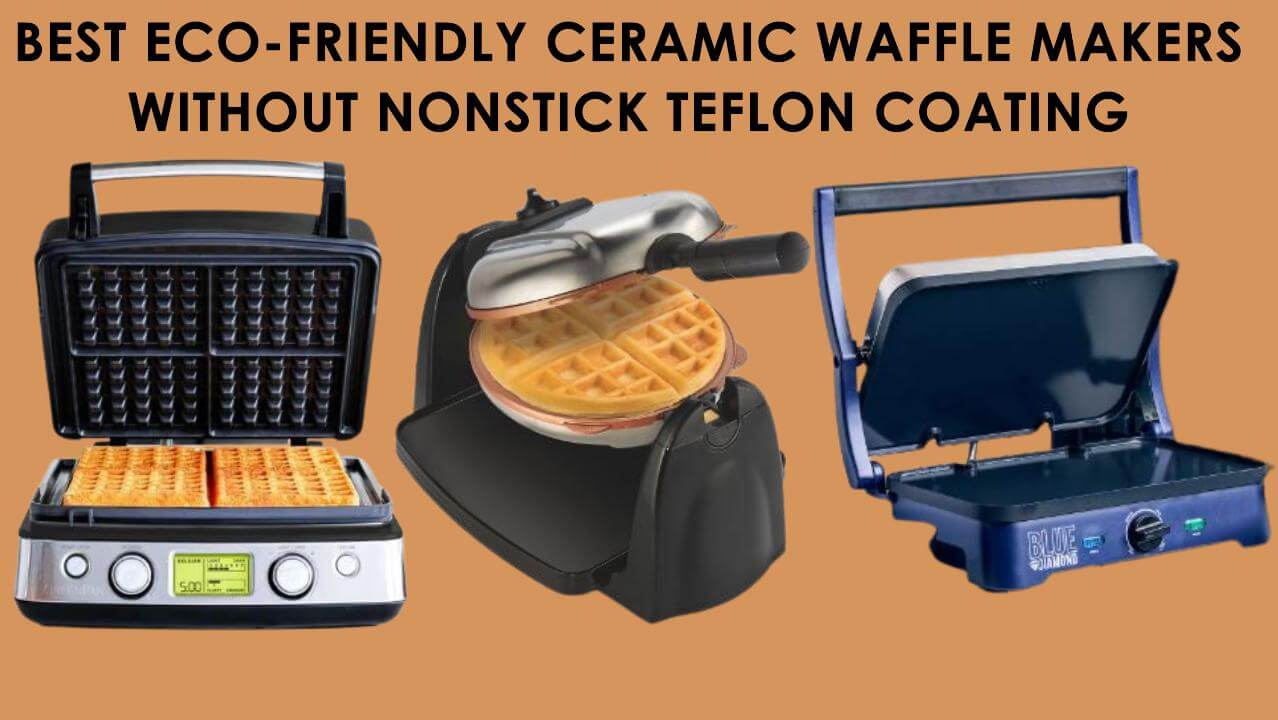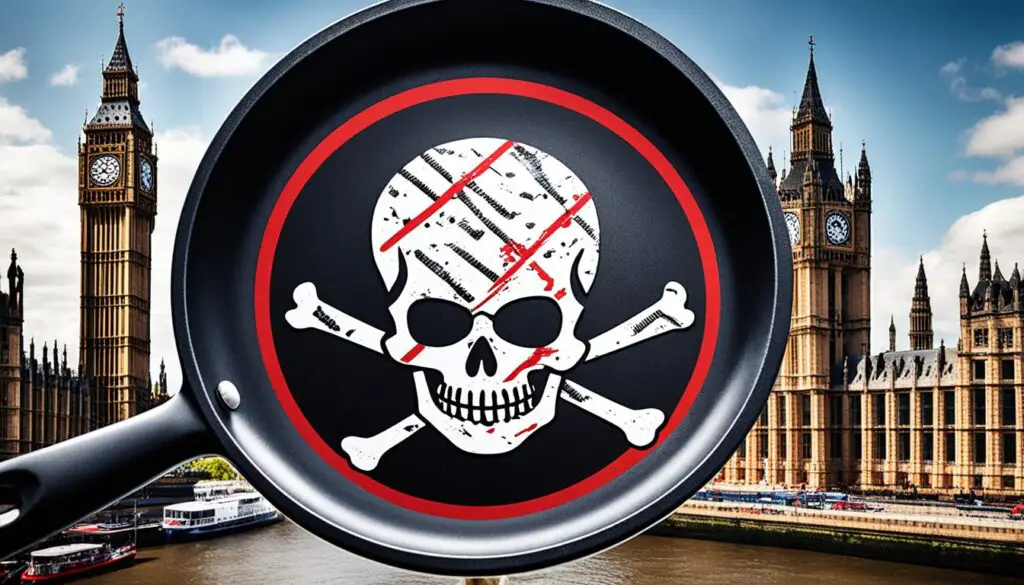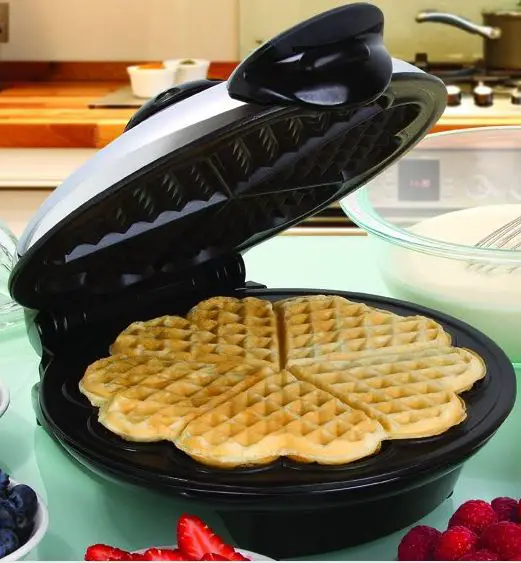This article will attempt to answer the question asked by many consumers when they are choosing between appliances ‘Ceramic vs Teflon: Which is Safer?’. The debate between ceramic and Teflon waffle makers started soon after ceramic coated products became available.
The first argument is that all ceramic waffle makers are safer than Teflon waffle makers because they do not contain any toxic chemicals such as PFAS (perfluoroalkyl and polyfluoroalkyl substances), which are a group of man-made chemicals such as PFOA (perfluorooctanoic acid) and PFOS (perfluorooctane sulfonic acid).
Also ceramic is more durable than Teflon, which has the tendency to scratch and chip easily, and also heats up faster, which makes it easier to cook. The main reasons you would choose Teflon are that it is much cheaper and easier to find.
Many amateur chefs today use Teflon-coated pans to cook with, believing them to be the only option. However, recent studies have shown that cooking with Teflon is very hazardous to your health because it contains PTFE (polytetrafluoroethylene), a chemical linked with many health risks such as cancer and hormonal changes that is likely to emit harmful chemicals and off-gas when heated at very high temperatures.
Ceramic cookware was introduced in response to the demand for healthier and less toxic alternatives. Ceramic cookware has been proven to be a safer alternative since it does not contain any harmful chemical coatings. Cooking with ceramic releases far fewer harmful chemicals and can give you healthier meals. High heat resistant ceramic coating will not chip or peel like Teflon cookware does. This article will discuss how ceramic cookware is more environmentally friendly and healthier than Teflon coated pans.
The best waffle maker with removable ceramic plates, the Hamilton Beach 26031, only contains non-toxic chemicals. Another great ceramic Belgian waffle maker is the Calphalon Intellicrisp ceramic waffle maker because it has a countdown timer, audio beeps, and really good heat distribution. If you want to learn more about the safest ceramic waffle makers on the market, then please read this article: best eco friendly ceramic waffle makers without teflon coating.
Table of Contents
The Problem with Teflon Coated Pans
For decades, Teflon-coated pans have been a staple in most American kitchens because they are affordable and easy to clean. The popular cookware is non-stick which means it doesn’t need any oils or butter to prevent food from sticking.
Teflon is the brand name for a type of non-stick coating developed by chemists Roy Plunkett and Jack Rebok while they worked at the DuPont Company in 1938. The original Teflon fluoropolymer was called polytetrafluoroethylene, or PTFE.
Teflon is a synthetically produced material that consists of a mixture of polytetrafluoroethylene (PTFE) and perfluorooctanoic acid (PFOA). PTFE is what gives Teflon its nonstick properties but when it is heated at 300 degrees Celsius or higher, it releases toxic fumes such as PFOA, which has been shown to affect liver function and cause mutations in DNA and cancer in animals.
PFOA is classified as a human carcinogen by the Environmental Protection Agency and has been linked to thyroid disease, kidney disease, and birth defects.
What does the American Cancer Society think?
The American Cancer Society (ACS) has addressed concerns about Teflon-coated cookware and its potential health effects. Their position can be summarized as follows:
-
Safety of Teflon:
The ACS emphasizes that Teflon itself is not considered carcinogenic. Teflon is a brand name for polytetrafluoroethylene (PTFE), a synthetic fluoropolymer. When used as intended, PTFE is inert and doesn’t react with our bodies or food. It’s this stability that makes it effective as a non-stick coating. -
Concerns about PFOA:
PFOA (perfluorooctanoic acid) was previously used in the manufacturing process of Teflon. It’s part of a group of chemicals called PFASs (per- and polyfluoroalkyl substances). Animal studies have shown that exposure to high levels of PFOA may increase the risk of certain tumors in the liver, testicles, mammary glands, and pancreas. However, it’s important to note that these studies involved much higher exposure levels than humans typically encounter. -
PFOA in finished products and phase-out:
The amount of PFOA in finished Teflon products was always very low, as most of it was removed during the manufacturing process. Furthermore, in response to health concerns, major manufacturers in the U.S. agreed to phase out the use of PFOA by 2015. The phase-out was actually completed by 2013. This means that Teflon products made after this date should not contain PFOA. -
Proper use of non-stick cookware:
The ACS advises using non-stick cookware as intended to minimize any potential risks:- Avoid preheating empty pans, as this can cause the coating to reach high temperatures quickly.
- Use low or medium heat settings when cooking.
- Don’t use metal utensils that can scratch the coating.
- Replace pans if the coating starts to peel or flake.
- Ensure good ventilation when cooking.
-
Alternatives to Teflon:
For those who prefer to avoid Teflon, the ACS mentions several alternatives:- Cast iron: Naturally non-stick when properly seasoned.
- Stainless steel: Durable and doesn’t have a coating that can peel.
- Glass: Inert and doesn’t react with food.
- Ceramic-coated cookware: A newer alternative that provides non-stick properties.
-
Ongoing research:
While current evidence doesn’t suggest a significant cancer risk from Teflon cookware, the ACS acknowledges that research is ongoing. They continue to monitor new studies on PFASs and other chemicals used in cookware. The organization encourages consumers to stay informed about new findings. -
Broader context:
It’s worth noting that while the focus has often been on cookware, PFASs have been used in many other products, including water-resistant clothing, stain-resistant fabrics, and some food packaging. The ACS and other health organizations are more concerned about these wider environmental exposures than about exposure from cookware. -
Regulatory actions:
In addition to the voluntary phase-out by manufacturers, regulatory bodies like the Environmental Protection Agency (EPA) have taken steps to reduce PFOA exposure. The EPA has established health advisory levels for PFOA in drinking water and continues to study its effects.
These precautions are mainly to prevent the breakdown of the non-stick coating, which can release fumes that may cause temporary flu-like symptoms in humans and can be lethal to birds.
Why Teflon does not contain any PFOA anymore?
In 2001, some local residents in Ohio and West Virginia sued DuPont when it was determined that PFOA from their Washington Works facility contaminated their drinking water. In 2005, Dupont settled with the plaintiffs for $107 million.
Then another bigger lawsuit involving 3,500 plaintiffs from Ohio and West Virginia was filed against DuPont. After decades of producing the chemical, DuPont was finally forced to stop producing PFOA and PFOS by the Environmental Protection Agency in 2015. These toxic chemicals have been linked to many medical problems, including kidney and testicular cancer, thyroid disease, ulcerative colitis, and high cholesterol.
The EPA has stated that PFOA belongs to a group of older, long-lived chemicals that are unsafe and dangerous even in small amounts. This resulted from thirty years of lobbying efforts by environmental activists who wanted to change how chemicals were regulated to achieve more transparency.
DuPont is the world’s largest maker of Teflon but, in 2015, DuPont signed a consent decree agreeing to stop the production of PFOA and PFOS in November 2015. DuPont spokesperson Dan Turner stated that Dupont still believes that their Teflon is safe and caused no harm, contrary to EPA reports.
Does ceramic coating contain any harmful chemicals?
The FDA has approved the use of ceramic coatings in non-stick cookware, which is good news for consumers who care about the health risks Teflon coated products may pose. Ceramic coatings are made with natural ingredients like clay, lime, and silica which are all nontoxic and safe to use in your kitchen. Clay is the most prevalent material used in ceramic cookware. These materials are mixed together and carefully heated until they become hardened. Then the ceramic piece is glazed with a type of coating or paint to prevent it from rusting or chipping. Ceramic cookware is odorless and retains heat well. It is non-toxic and won’t erode in the dishwasher.
Does ceramic coating contain PTFE or PFOA?
Ceramic coating is a new generation of nonstick coating that was developed in response to the health concerns of cooking with Teflon nonstick coating because it contains PTFE and PFOA which can emit toxic fumes. Ceramic coatings are an environmentally friendly alternative to Teflon because it contains no PTFE or PFOA and is approved by the FDA. The non-stick properties of a ceramic coating make them a good choice because it releases food more quickly which makes it easier to clean, heats up faster, and is more scratch-resistant.
Is ceramic coating safer and more durable than Teflon?
Many homes make the switch to ceramic cookware for their family, due to its durability and low risk of chemicals leaching into food while it cooks. The ceramic coating is also more durable than Teflon, which is prone to scratches, wear, and chipping. The ceramic coating has been shown to last three times longer than Teflon.
Ceramic cookware is typically made from a mixture of clay, metal oxides, and other ingredients that do not react with food. This means that users are less likely to find harmful substances in their meals when they use ceramic pots or pans. Because it is non-toxic, there are no harmful fumes released when it’s heated at high temperatures like with other cookware.
Ceramic cookware heats up quickly and uniformly because it does not hold on to heat like cast iron or glass does.



